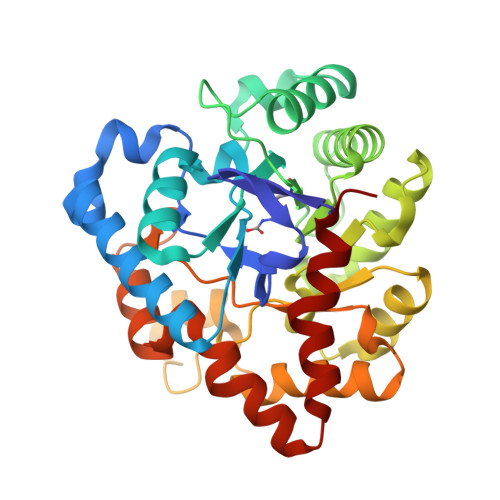High resolution crystal structure of a fluoride-inhibited organophosphate-degrading metallohydrolase.
Selleck, C., Guddat, L.W., Ollis, D.L., Schenk, G., Pedroso, M.M.(2017) J Inorg Biochem 177: 287-290
- PubMed: 28673485
- DOI: https://doi.org/10.1016/j.jinorgbio.2017.06.013
- Primary Citation of Related Structures:
5VEJ - PubMed Abstract:
Metal ion-dependent, organophosphate-degrading enzymes (OP hydrolases) have received increasing attention due to their ability to degrade and thus detoxify commonly used pesticides and nerve agents such as sarin and VX. These enzymes thus garner strong potential as bioremediators. The OP hydrolase from Agrobacterium radiobacter (OpdA) is one of the most efficient members of this group of enzymes. Previous studies have indicated that the choice of the hydrolysis-initiating nucleophile may depend on the pH of the reaction, with a metal ion-bridging hydroxide being preferred at lower pH (i.e. pH≤8.5), and a terminally coordinated hydroxide at higher pH (i.e. pH>9.0). Furthermore, fluoride was shown to be a potent inhibitor of the reaction, but only at low pH. Here, the crystal structure (1.3Å, pH6) of OpdA in presence of fluoride is described. While the first coordination sphere in the active site displays minimal changes in the presence of fluoride, the hydrogen bonding network that connects the dimetallic metal center to the substrate binding pocket is disrupted. Thus, the structure of fluoride-inhibited OpdA demonstrates the significance of this hydrogen bond network in controlling the mechanism and function of this enzyme.
Organizational Affiliation:
School of Chemistry and Molecular Biosciences, The University of Queensland, St. Lucia, Queensland 4072, Australia.


















